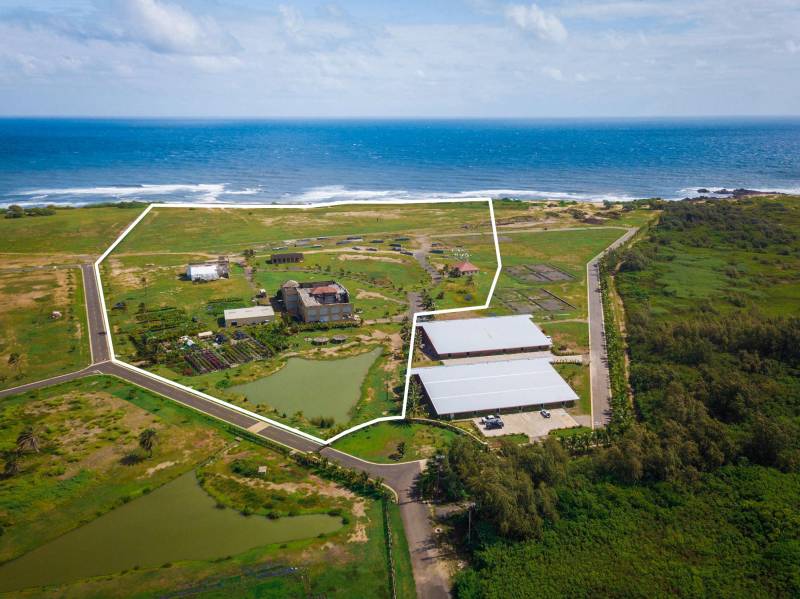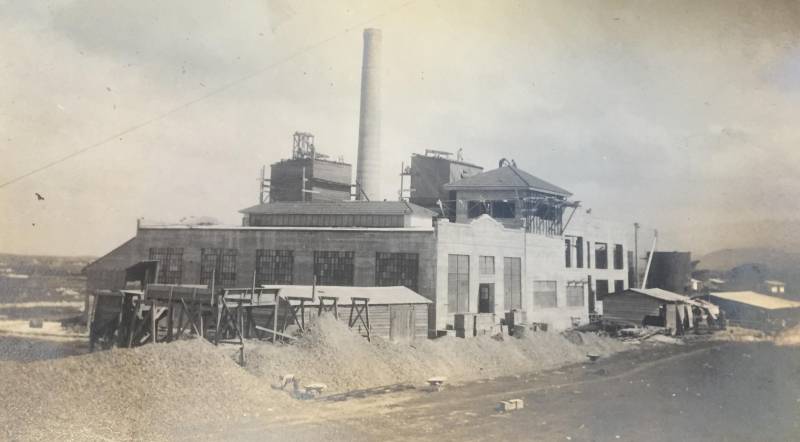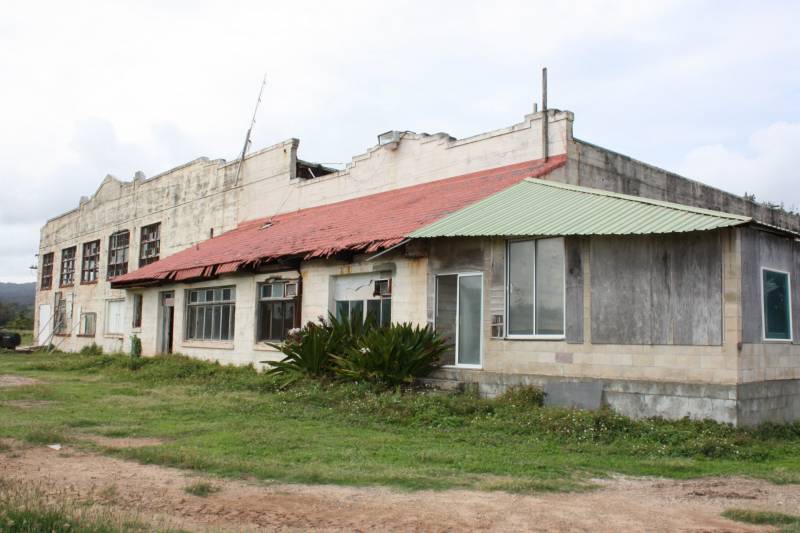Historic Oceanfront Property Marconi Station Seeking Visionary Buyer
It is rare to find a beachfront property in Hawaii with the potential to create something more than just a single family home. Marconi Station – officially on the National Register of Historic Places as Marconi Wireless Telegraphy Station #13000352 — is listed at $15 million but set to be auctioned with no reserve in January.
This might not be the property for you if you are just looking for a large parcel of vacant beachfront land in Hawaiʻi (we can make other suggestions). But if you believe you might have the vision and capacity to take on the restoration and stewardship of this unique Oʻahu North Shore property, here is a summary of the opportunity.

Four historic structures, four parcels, 26.67 acres, 838 feet of ocean frontage to be auctioned in January 2022.
What is Required with Historic Designation of Marconi Station Property?

Early 20th century photo of the 2-1/2 story power house/operating plant, one of four historic buildings to be preserved.
The Marconi Wireless Telegraph Station Historic District encompasses 89 acres of which the current Marconi Station sale is only a portion. The Marconi Station property to be auctioned includes four concrete buildings: the power house/operating building, hotel, administration building, and manager’s cottage, that together with some remnant structures like the remains of the smoke stack seen in the photo above, constitute the “core historic district.” The 26+ acres also has other significant conservation values.

Next step: interim stabilization plan to prevent further deterioration of the four historic buildings at Marconi Station
The Marconi Station property is on the Hawaiʻi State historic register, and the requirements for restoration and approval of future use are negotiated with the State Historic Preservation officer. Sellers have signed a memorandum of understanding laying out a timetable and details for the most immediate necessity of an interim stabilization plan to prevent further deterioration. The next step that will fall to the Buyer is to file a historical treatment plan proposing the future use of the buildings, consistent with maintaining their historic character.
How Can the Marconi Station Buildings Be Used after Renovation?

Artist rendering of how the managerʻs house might look if restored as a residence, with the other structures in the back
While the exterior of the four buildings will need to be restored to an approximation of how they looked in 1914, the uses of the interiors do not have to be exactly what they were originally, namely a power house, hotel, administrative offices, and managerʻs residence.
The managerʻs cottage has about 2,000 sq ft of space, with two bedrooms, and is relatively intact and true to the character of the district. That one is easy if you want to live right on property, or have a caretaker down the road.
The larger structures could potentially house a variety of activities. The term for this in historic preservation circles is “adaptive reuse.” Here is where it becomes tricky. The zoning on this property is agricultural, and the red buildings with white roofs you see in the listing photos are buildings on the adjacent RCA Trade Center property, designed to support value added processing for individual farm tenants. If your vision for the property is primarily agricultural, your path through building permits will be simpler than if your proposed use is one that while not normally allowed by zoning, would be consistent with the historic use of the buildings.

Artist rendering of restoration of the 15-bedroom hotel, 2-story hotel. Future inn or gracious family residence?
In other words, one of the structures originally had fifteen bedrooms, reading room, club room, library, dining room, and kitchen. This “hotel” could conceivably lend itself to becoming a farm stay or ecotourism inn, where guests could immerse in a property that is in itself a piece of history and provides a venue to volunteer in shoreline preservation of fragile Laysan albatross and monk seal habitat, have a farm-to-table experience, and learn about the pre-development cultural history of Kahuku. But this vision, if approved by the historic preservation process, would still need to wind its way through planning (zoning) and building permit processes.
In other words, the buyer of the Marconi Station needs to be a bit of a visionary risk-taker. The historic preservation groundwork laid by the seller over a 15-year period in itself represents serious value to the new owner, who could continue to work with the same consultants in transforming this property into a modern day use, conceived in thoughtful relationship to the history and living community in which Marconi Station is embedded.
zoning versus adaptive reuse




April Howell Young
December 28, 2021
Hi Beth,
This is beautiful. I wish I had a spare 20M. Please keep me in the loop of this sale I would love to see it become an eco-tourism site to preserve the shoreline and benefit local farmers.
Thank you!
April HY
Edward Rodriguez
December 31, 2021
A visionary risk taker is an understatement. Aside from the fact that you have developement partners that tell you how it’s going to be restored, You have to factor in the cost of asbestos and lead cleanup. Any other bio or environmental hazards on the property? The concrete buildings are probably beyond repair in many areas. As a 40 year developer and builder this is a deep pocket restoration even for a large corporation. As an experienced commercial property general building inspector I’m open for any developer to hire me for a full report before they attempt to bid on this property.
Beth Robinson
January 3, 2022
> Edward, thanks for reading and weighing in. We will keep you contact information handy.